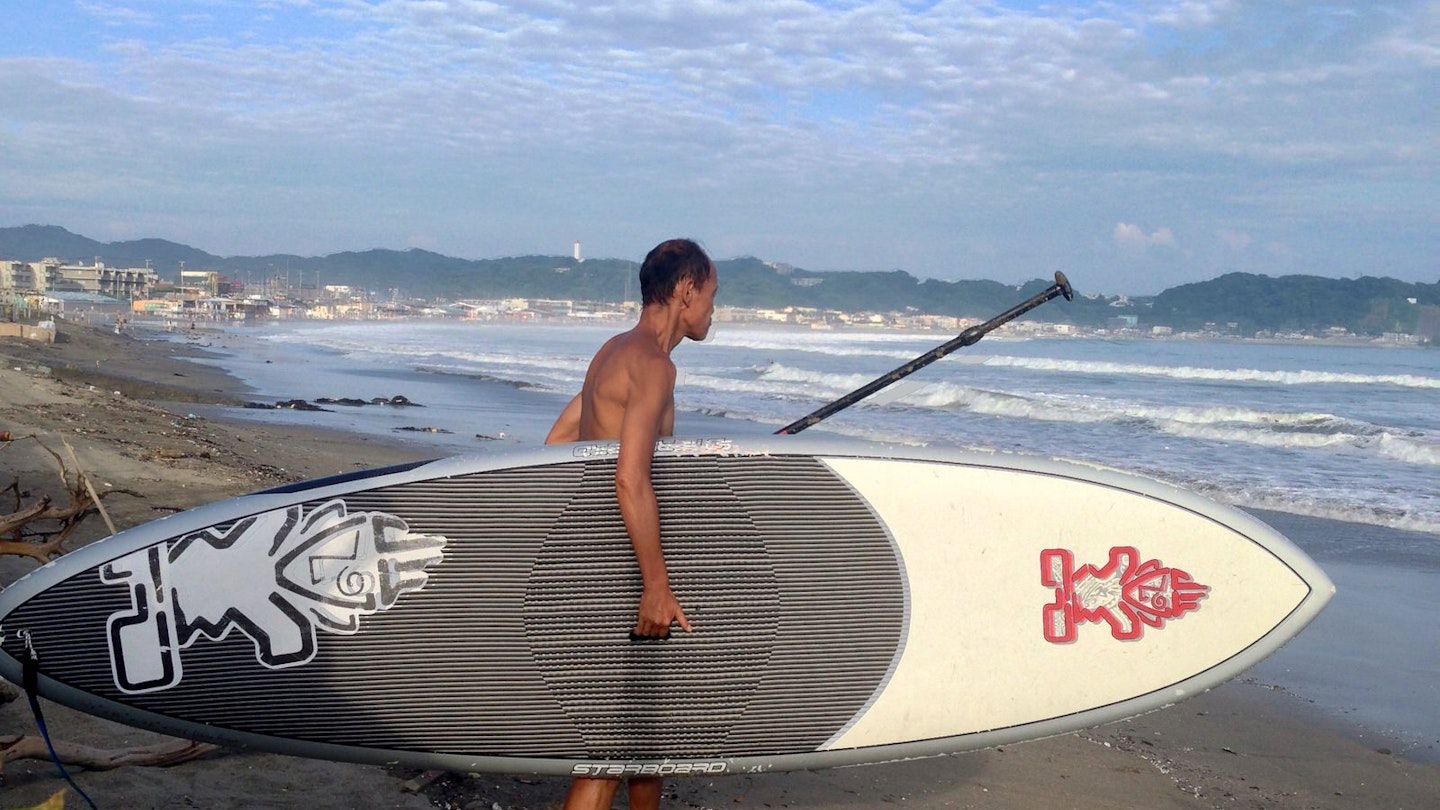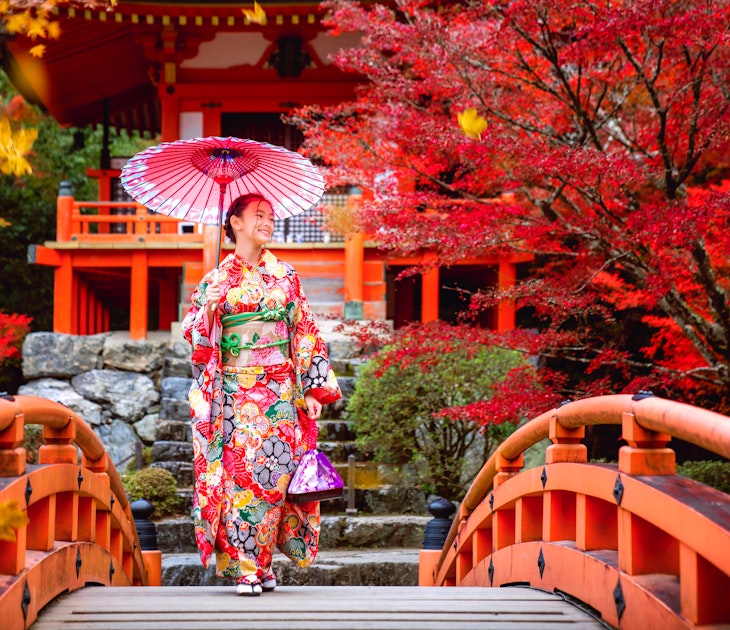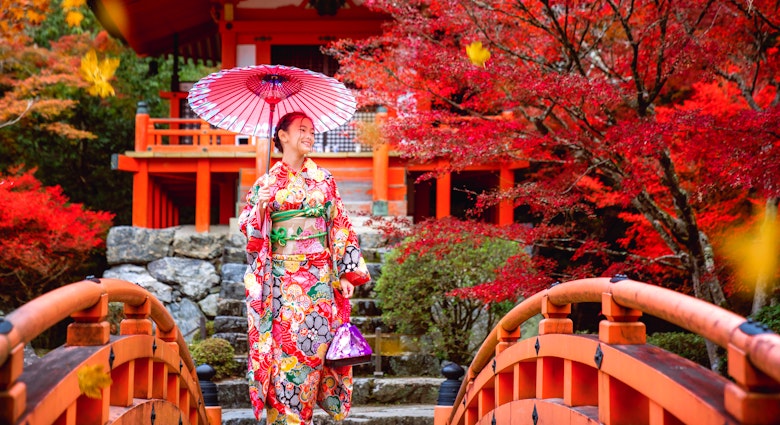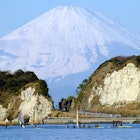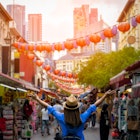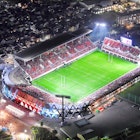Tokyo is dazzling, frenetic and fashionably cool, but there are times when the population crush and non-stop energy turns this urban paradise into a pressure cooker. An easy escape is to head for the seaside in Kamakura and Yokohama, both easy day trips south of Tokyo.

Kamakura
Today known for its relaxed vibe and surf scene, Kamakura once served as Japan's capital (from 1185 to 1333). Venerable Buddhist temples and Shintō shrines nestle amid the verdant hills that surround the town, offering the opportunity for easy hikes followed by foodie shopping and an outdoor hot-spring dip.
Giant Buddha and surfboards
From Kamakura Station, the old-fashioned Enoden line trains rattle three stops past suburban houses to Hase, location of Kamakura’s most famous sight: the iconic Daibutsu. This 11.4m bronze statue of Amida Buddha, framed by forested hills and open sky, gazes serenely out to sea from his stone pedestal in the grounds of the 13th-century temple Kōtoku-in.
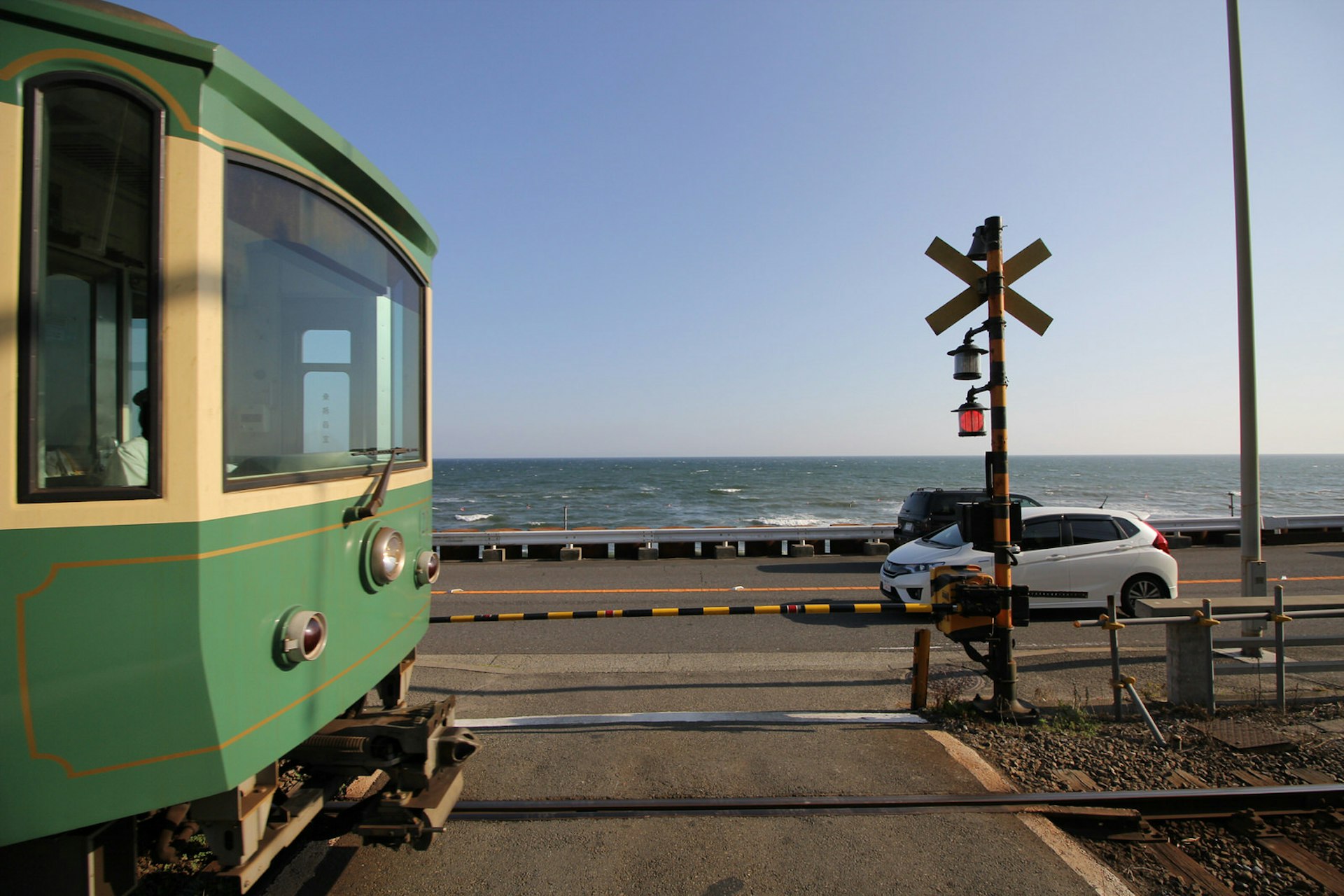
It’s worth lingering in Hase – its quaint streets lined with minka (old wooden houses) are a pleasure to explore. Some of the houses, such as Ichigeya (ichigeya-en.com), have been turned into attractive cafes and gift shops. The hillside terraces and gardens of Hase-dera provide wonderful views of the bay and the surrounding hills. Pad along Yuigahama beach, off which surfers ride the gentle waves, or hop on a board yourself. There are plenty of places to rent equipment, with the folks at the backpackers IZA Kamakura, or the surfer-favourite burger shack Good Mellows, able to clue you into scene.
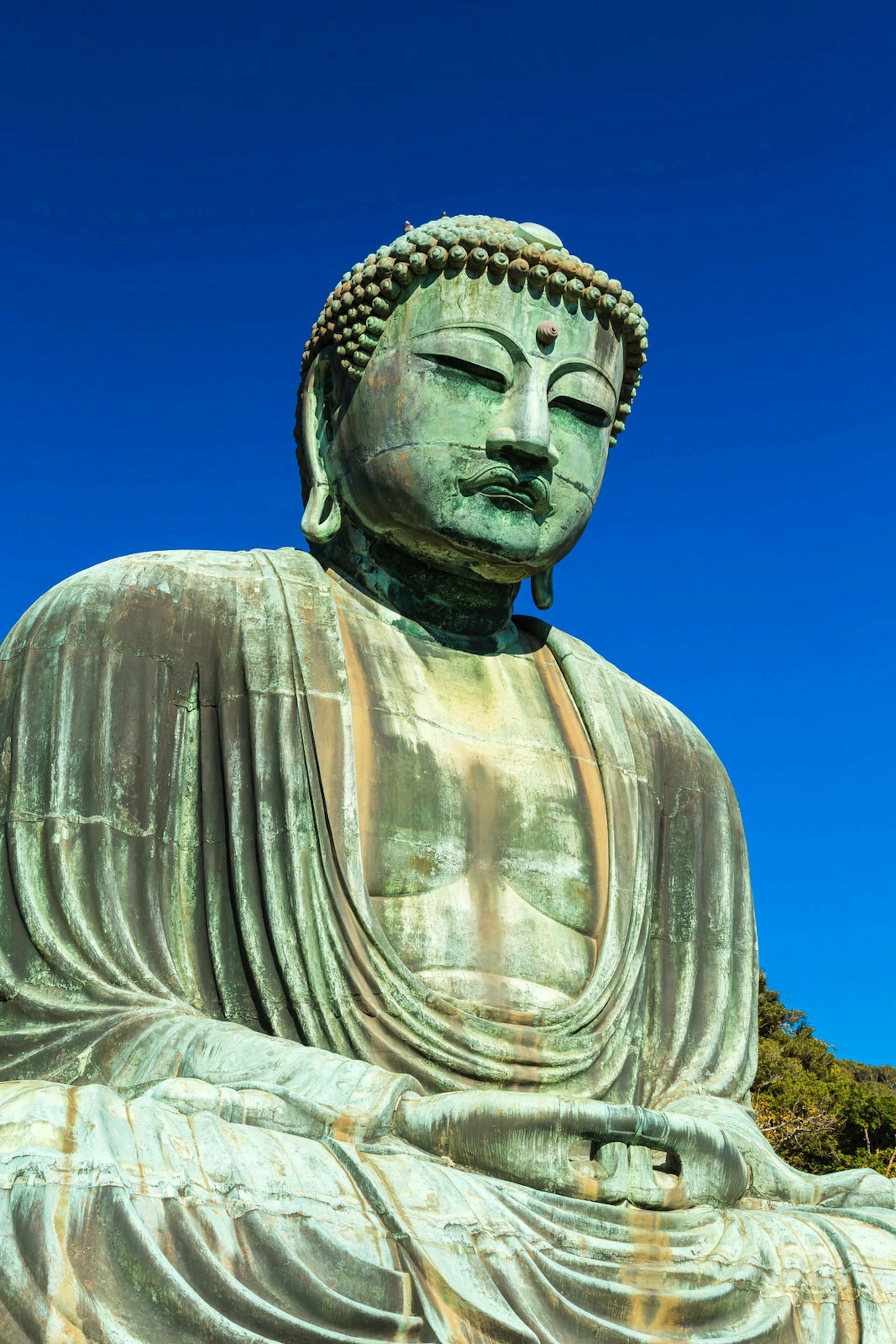
Hillside hiking
Starting a short distance from the grounds of Kōtoku-in, the Daibutsu Hiking Course is a 3km trail that leads up into the hills to connect with Kita-Kamakura. It's an easy and shaded route and along the way you can pause at the lovely Itsuki Garden (itsuki-garden.com), a cafe with multiple brick terraces swathed in forest greenery. Near the Kamakura end of the trail, follow the signs to Zeniarai-benten, a cave shrine dedicated to Benten, the goddess of good fortune. Join locals here in the ritual of placing your money into a bamboo basket and giving it a wash in the spring water (zeniarai translates as ‘coin washing’), said to bring on financial success.
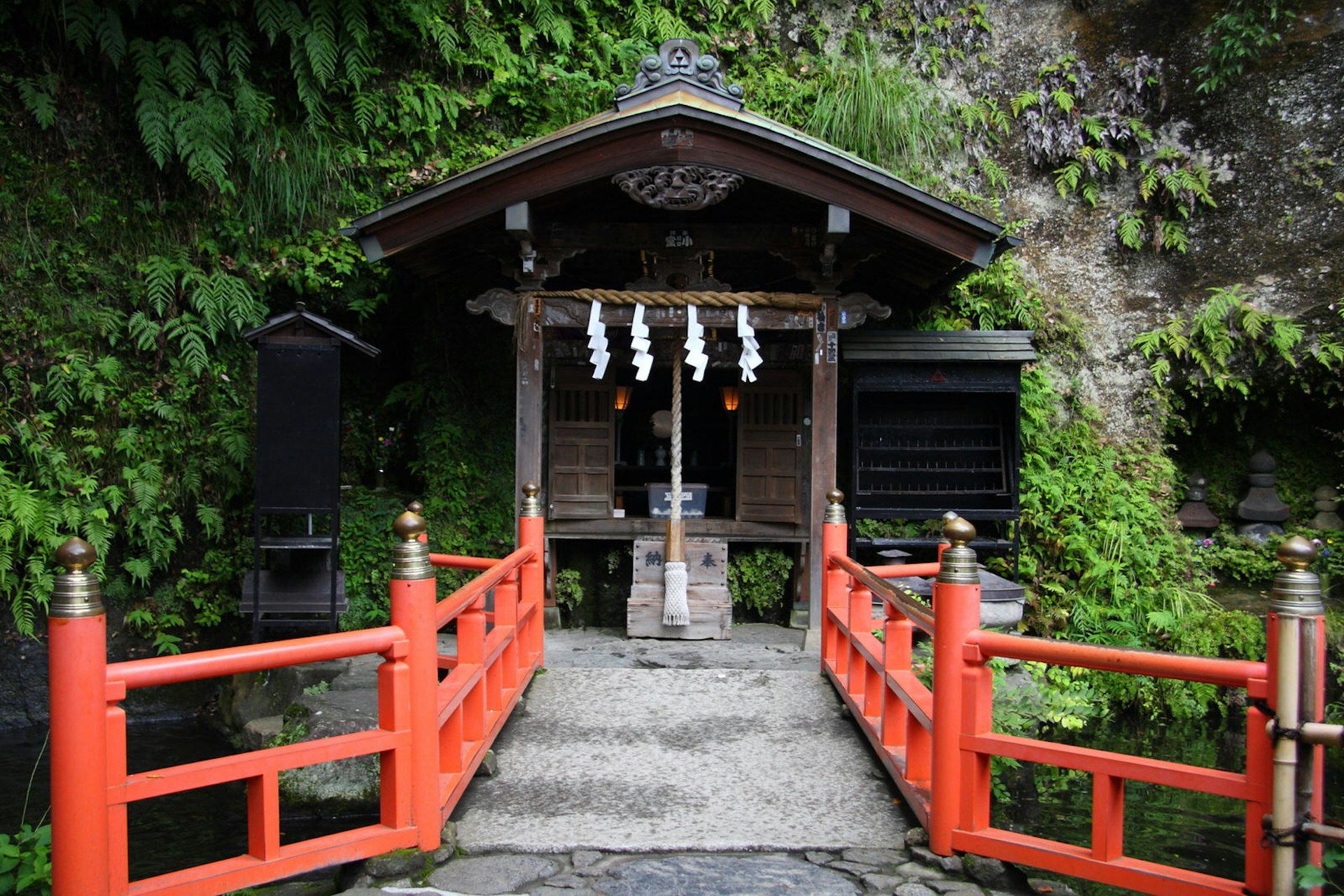
Shopping and local eats
Flush with the thought of extra cash, indulge in some retail therapy along the lively shopping street Komachi-dōri, which runs from Kamakura Station towards the historic shrine Tsurugaoka Hachiman-gū. Among the souvenirs to look out for are Hato Sable, dove-shaped butter cookies sold by Toshimaya; and freshly made sembei (rice crackers) at Kamakura Ichibanya. For tasty breads and baked goods, search out hippy-trippy Paradise Alley Bread & Co (cafecactus5139.com/paradisealley) in the daily Kamakura Farmers Market, a 10-minute walk south of the station towards the beach. Continue in this direction and then north to locate the rustic restaurant Bonzō. Such is the quality of its handmade soba (buckwheat noodles), the restaurant has been awarded a Michelin star.

Soak under the stars
Having hiked and eaten your way around Kamakura, hop back on the Enoden line to Inamuragasaki. A three minute walk from the station, facing the beach, is Inamuragasaki Onsen (inamuragasaki-onsen.com), where the soothing spa waters are coloured black with minerals. For ¥1400 you can blissfully relax in a giant rotemburo (open-air bath) while gazing up at the starry skies.
Yokohama
Yokohama is Japan's second largest city, with a soothing bayside location, historic and contemporary architecture, interesting museums, and a booming craft beer industry. It is also home to the art festival Yokohama Triennale, in town again in 2017.
Art and architecture
'Islands, Constellations and Galapagos' is the theme for 2017's Yokohama Triennale (yokohamatriennale.jp/2017). This contemporary art fest runs for three months from 4 August, providing a boost to the city's already vibrant creative scene. Two of the major venues hosting shows during the Triennale are Yokohoma Museum of Art and BankART Studio NYK, both of which are wonderful galleries worth visiting at any time of year.

BankART Studio NYK occupies what was once the warehouse of the NYK shipping line and is typical of the way older pieces of architecture across Yokohama's port area have been adapted for modern use. A short walk away is Minato Mirai 21. With a name meaning 'port future', this area is a bold combination of contemporary and older buildings: the 296m-tall Landmark Tower and the award-winning Ōsanbashi International Passenger Terminal, a graceful promenade designed to reflect the ripples of ocean waves, sit alongside weathered red-brick Akarenga Sōkō (yokohama-akarenga.jp), a series of 19th-century warehouses transformed into a modern shopping mall.

Quirky museums
Minato Mirai 21 is also the location of a couple of fun museums that will particularly appeal if you're travelling with kids or are playful at heart. The Cup Noodles Museum is an imaginatively designed shrine to the inventor of the instant noodle and the Cup Noodle, Momofuku Ando. The place is popular so arrive early to bag a slot to create a Cup Noodle with your own design of packaging and ingredients.
Another delight is the Hara Model Railway Museum. Displayed here are items from the 6000-piece collection of model trains and railway memorabilia accumulated by Hara Nobutaro, a development engineer, over 80-plus years. The highlight is Ichiban Tetsumo Park, a 30m by 10m diorama that is every kid's dream train set, with over 450m of track and beautifully detailed models. Children can even play at being the chief operator of the trains.
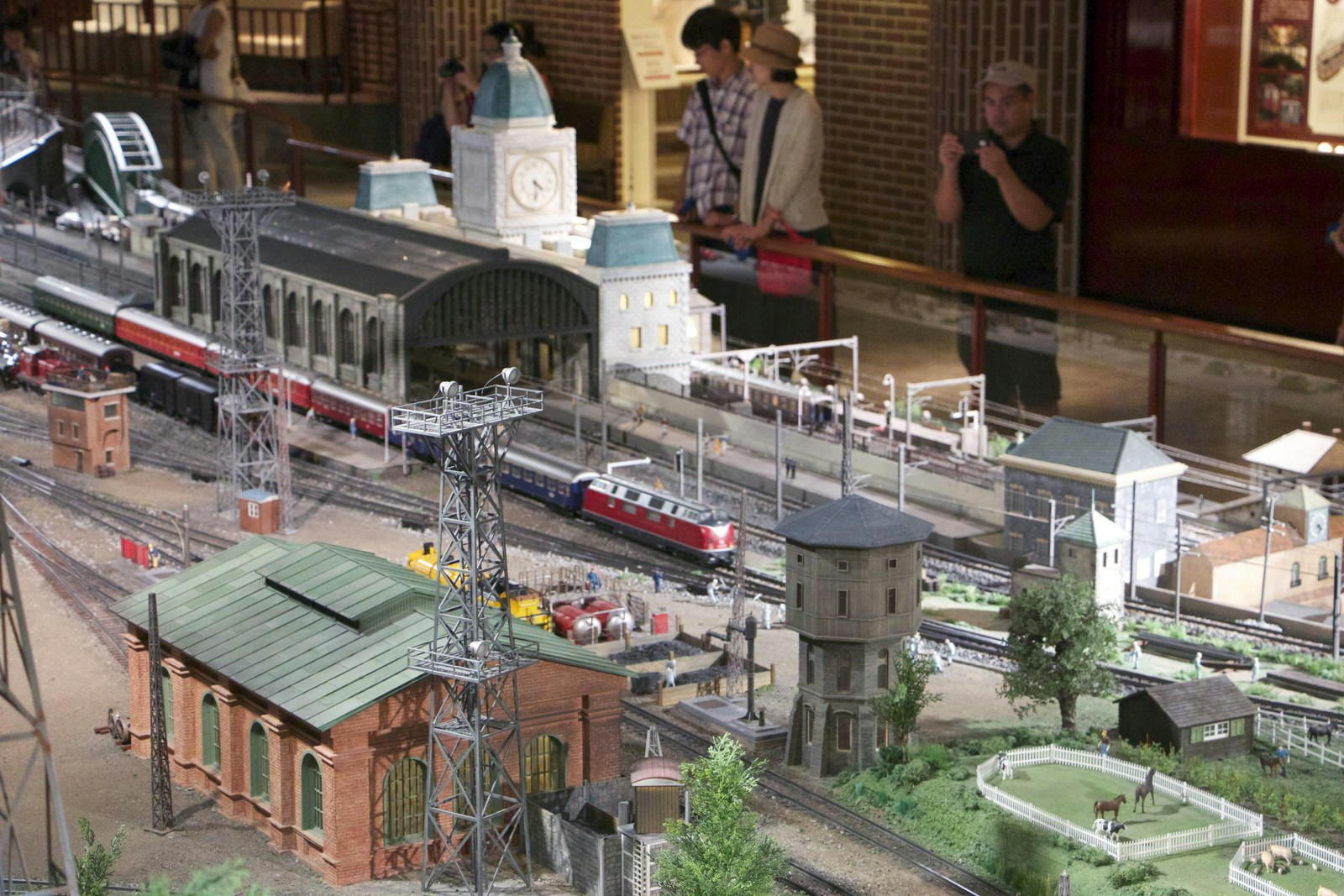
Diverse neighbourhoods
There are several other distinct districts to explore around Yokohama.
Yokohama was one of the first ports in Japan to open to international trade (1859), becoming a major gateway for foreign influence. Among the early arrivals were Chinese traders, eventually leading to the establishment of what became Japan’s first and largest Chinatown. The area is a 500 sq metre enclave marked by five brightly decorated 'Pailou' gateways, with red and gold lanterns dangling over narrow lanes lined with over 500 restaurants. A good one to try is Manchinrō Honten, which has been serving up tasty dim sum for over 100 years.
Motomachi-Yamate, meanwhile, offers a chic shopping street overlooked by a wooded bluff where several vintage European-style residences have been preserved. This is where some of the first foreigners took up residence in the city in the late 19th century. Alight at Motomachi-Chūkagai metro station for either Chinatown or Motomachi-Yamate.

Around 2km southwest of Minato Mirai 21, the once red-light district of Koganechō is now populated by young creatives and entrepreneurs who have transformed beneath-the-train-tracks commercial spaces into compact art studios, galleries, shops, cafes and bars. The annual art festival Koganechō Bazaar (koganecho.net) is a free exhibition of street art across the area.
Celebrating craft beer
Raise your glasses for Yokohama's enthusiastic embrace of beer. The city is stacked with microbreweries, such as Bashamichi Taproom and Yokohama Brewery, as well as several other bars, big and small, specialising in quality craft ales from across Japan. Mark your calendars for two annual beer-related events in the city: the Great Japan Beer Festival (beertaster.org) in September, and the Yokohama Oktoberfest held in the Akarenga Sōkō in early October, which features copious quaffing of some 130 different ales.
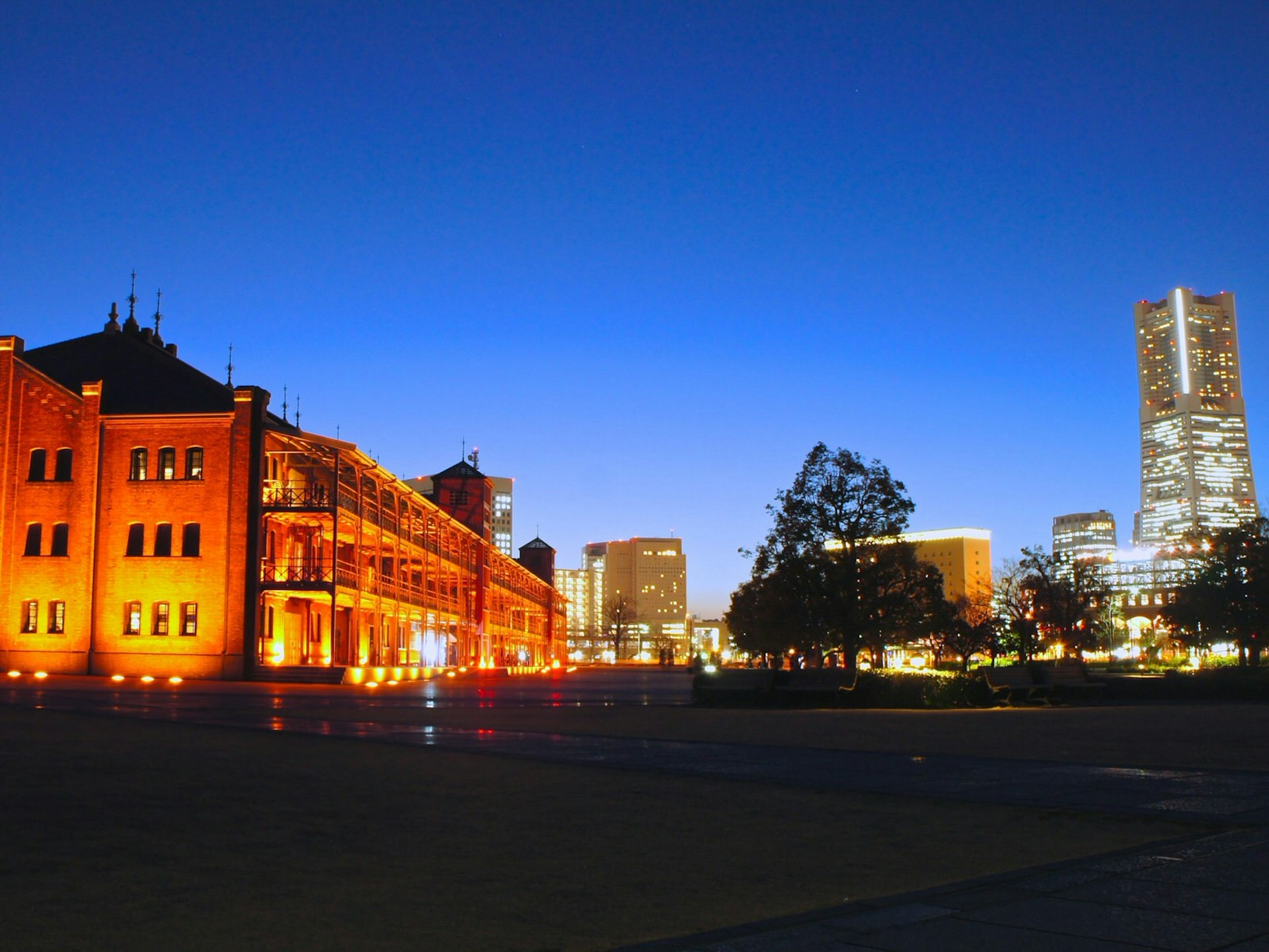
Make it happen
JR Yokosuka–line trains run to Kamakura from Tokyo (¥920, 56 minutes) via Yokohama (¥340, 27 minutes). Alternatively, the Shōnan Shinjuku line runs from the west side of Tokyo (Shibuya, Shinjuku and Ikebukuro, all ¥920) in about one hour, though some trains require a transfer at Ōfuna, one stop before Kita-Kamakura. For more planning and events information, check out Yokohama Official Visitors' Guide (yokohamajapan.com) and Kamakura City Tourism Association (kamakura-info.jp).

